Hyunho Lee
Landslide Hazard Mapping with Geospatial Foundation Models: Geographical Generalizability, Data Scarcity, and Band Adaptability
Nov 06, 2025Abstract:Landslides cause severe damage to lives, infrastructure, and the environment, making accurate and timely mapping essential for disaster preparedness and response. However, conventional deep learning models often struggle when applied across different sensors, regions, or under conditions of limited training data. To address these challenges, we present a three-axis analytical framework of sensor, label, and domain for adapting geospatial foundation models (GeoFMs), focusing on Prithvi-EO-2.0 for landslide mapping. Through a series of experiments, we show that it consistently outperforms task-specific CNNs (U-Net, U-Net++), vision transformers (Segformer, SwinV2-B), and other GeoFMs (TerraMind, SatMAE). The model, built on global pretraining, self-supervision, and adaptable fine-tuning, proved resilient to spectral variation, maintained accuracy under label scarcity, and generalized more reliably across diverse datasets and geographic settings. Alongside these strengths, we also highlight remaining challenges such as computational cost and the limited availability of reusable AI-ready training data for landslide research. Overall, our study positions GeoFMs as a step toward more robust and scalable approaches for landslide risk reduction and environmental monitoring.
Style Composition within Distinct LoRA modules for Traditional Art
Jul 16, 2025Abstract:Diffusion-based text-to-image models have achieved remarkable results in synthesizing diverse images from text prompts and can capture specific artistic styles via style personalization. However, their entangled latent space and lack of smooth interpolation make it difficult to apply distinct painting techniques in a controlled, regional manner, often causing one style to dominate. To overcome this, we propose a zero-shot diffusion pipeline that naturally blends multiple styles by performing style composition on the denoised latents predicted during the flow-matching denoising process of separately trained, style-specialized models. We leverage the fact that lower-noise latents carry stronger stylistic information and fuse them across heterogeneous diffusion pipelines using spatial masks, enabling precise, region-specific style control. This mechanism preserves the fidelity of each individual style while allowing user-guided mixing. Furthermore, to ensure structural coherence across different models, we incorporate depth-map conditioning via ControlNet into the diffusion framework. Qualitative and quantitative experiments demonstrate that our method successfully achieves region-specific style mixing according to the given masks.
Geospatial Artificial Intelligence for Satellite-based Flood Extent Mapping: Concepts, Advances, and Future Perspectives
Apr 03, 2025



Abstract:Geospatial Artificial Intelligence (GeoAI) for satellite-based flood extent mapping systematically integrates artificial intelligence techniques with satellite data to identify flood events and assess their impacts, for disaster management and spatial decision-making. The primary output often includes flood extent maps, which delineate the affected areas, along with additional analytical outputs such as uncertainty estimation and change detection.
Prithvi-EO-2.0: A Versatile Multi-Temporal Foundation Model for Earth Observation Applications
Dec 03, 2024

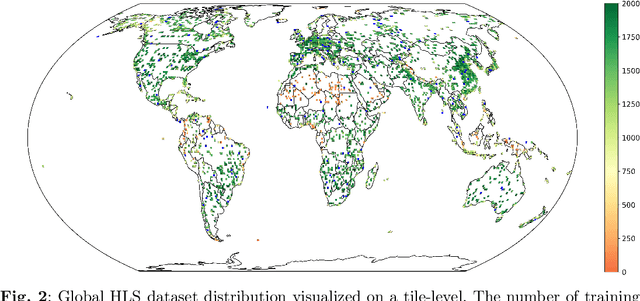
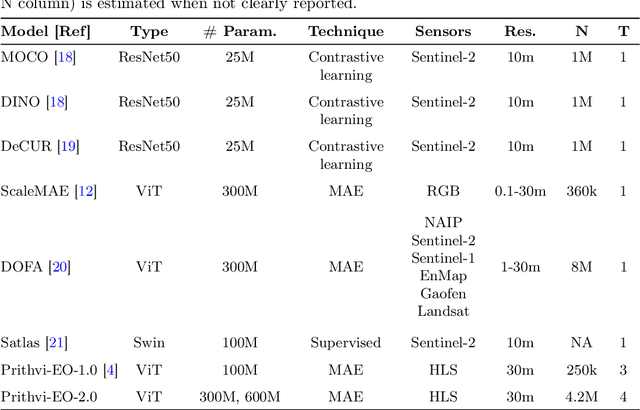
Abstract:This technical report presents Prithvi-EO-2.0, a new geospatial foundation model that offers significant improvements over its predecessor, Prithvi-EO-1.0. Trained on 4.2M global time series samples from NASA's Harmonized Landsat and Sentinel-2 data archive at 30m resolution, the new 300M and 600M parameter models incorporate temporal and location embeddings for enhanced performance across various geospatial tasks. Through extensive benchmarking with GEO-Bench, the 600M version outperforms the previous Prithvi-EO model by 8\% across a range of tasks. It also outperforms six other geospatial foundation models when benchmarked on remote sensing tasks from different domains and resolutions (i.e. from 0.1m to 15m). The results demonstrate the versatility of the model in both classical earth observation and high-resolution applications. Early involvement of end-users and subject matter experts (SMEs) are among the key factors that contributed to the project's success. In particular, SME involvement allowed for constant feedback on model and dataset design, as well as successful customization for diverse SME-led applications in disaster response, land use and crop mapping, and ecosystem dynamics monitoring. Prithvi-EO-2.0 is available on Hugging Face and IBM terratorch, with additional resources on GitHub. The project exemplifies the Trusted Open Science approach embraced by all involved organizations.
Practical Dataset Distillation Based on Deep Support Vectors
May 01, 2024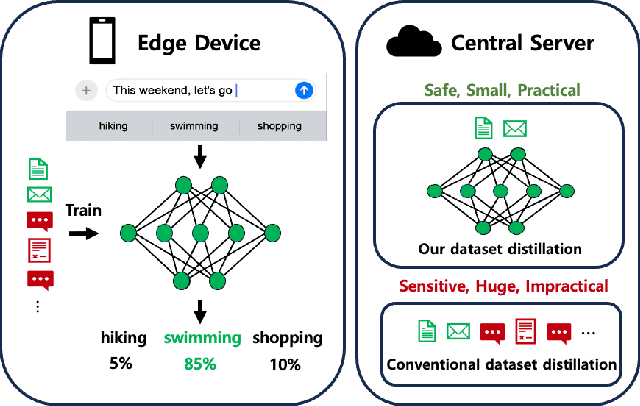


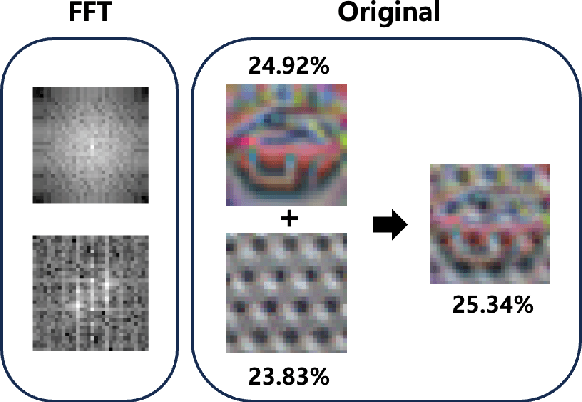
Abstract:Conventional dataset distillation requires significant computational resources and assumes access to the entire dataset, an assumption impractical as it presumes all data resides on a central server. In this paper, we focus on dataset distillation in practical scenarios with access to only a fraction of the entire dataset. We introduce a novel distillation method that augments the conventional process by incorporating general model knowledge via the addition of Deep KKT (DKKT) loss. In practical settings, our approach showed improved performance compared to the baseline distribution matching distillation method on the CIFAR-10 dataset. Additionally, we present experimental evidence that Deep Support Vectors (DSVs) offer unique information to the original distillation, and their integration results in enhanced performance.
Improving Interpretability of Deep Active Learning for Flood Inundation Mapping Through Class Ambiguity Indices Using Multi-spectral Satellite Imagery
Apr 29, 2024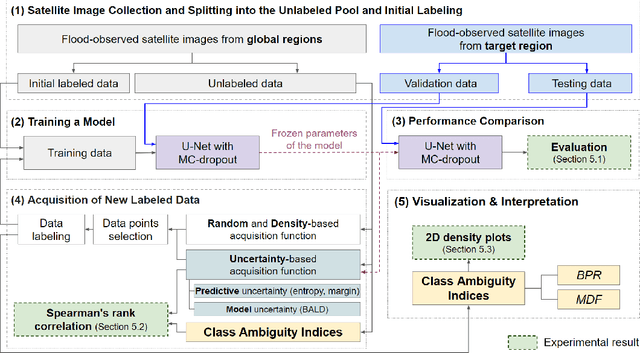
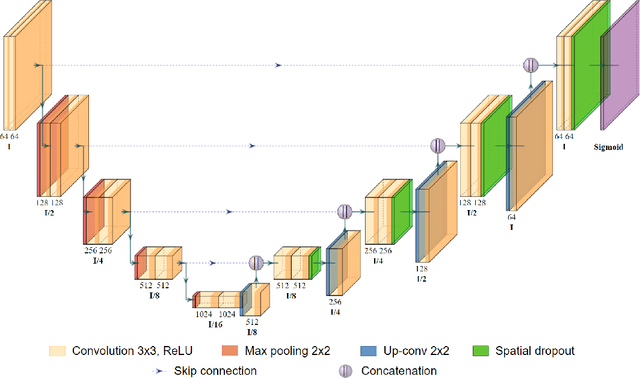
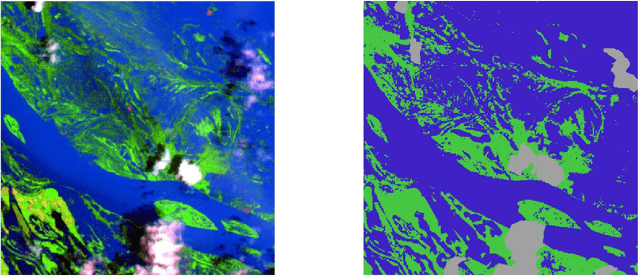
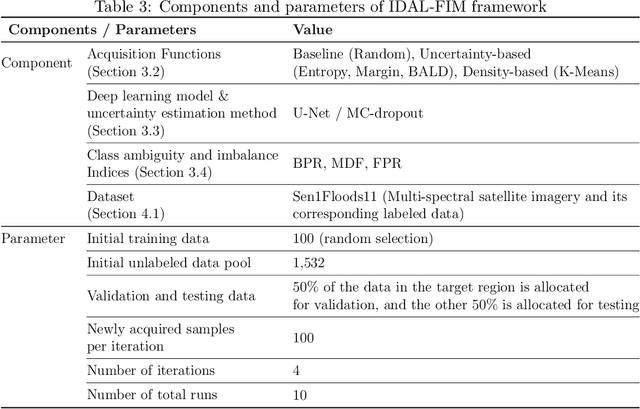
Abstract:Flood inundation mapping is a critical task for responding to the increasing risk of flooding linked to global warming. Significant advancements of deep learning in recent years have triggered its extensive applications, including flood inundation mapping. To cope with the time-consuming and labor-intensive data labeling process in supervised learning, deep active learning strategies are one of the feasible approaches. However, there remains limited exploration into the interpretability of how deep active learning strategies operate, with a specific focus on flood inundation mapping in the field of remote sensing. In this study, we introduce a novel framework of Interpretable Deep Active Learning for Flood inundation Mapping (IDAL-FIM), specifically in terms of class ambiguity of multi-spectral satellite images. In the experiments, we utilize Sen1Floods11 dataset, and adopt U-Net with MC-dropout. In addition, we employ five acquisition functions, which are the random, K-means, BALD, entropy, and margin acquisition functions. Based on the experimental results, we demonstrate that two proposed class ambiguity indices are effective variables to interpret the deep active learning by establishing statistically significant correlation with the predictive uncertainty of the deep learning model at the tile level. Then, we illustrate the behaviors of deep active learning through visualizing two-dimensional density plots and providing interpretations regarding the operation of deep active learning, in flood inundation mapping.
Deep Support Vectors
Mar 26, 2024
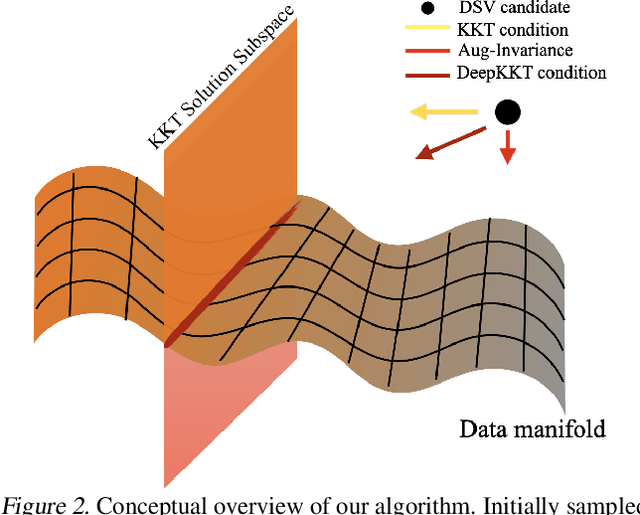
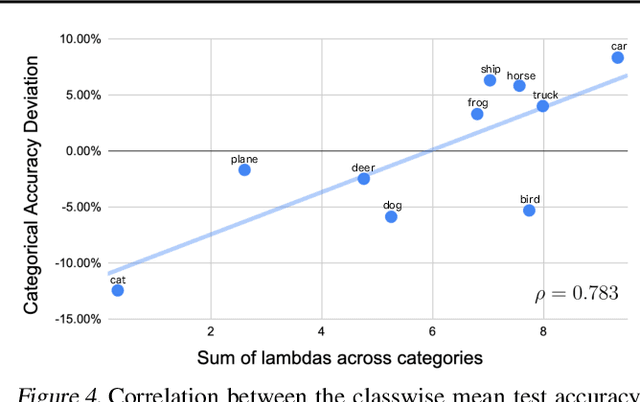
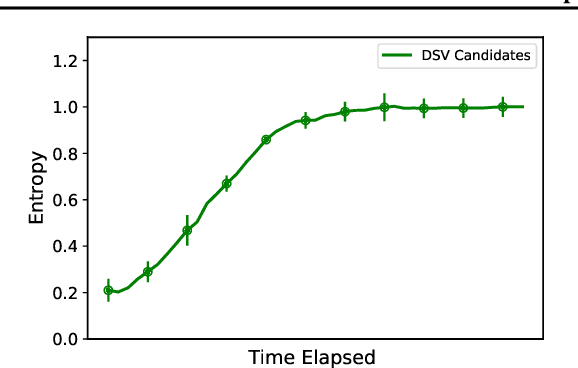
Abstract:While the success of deep learning is commonly attributed to its theoretical equivalence with Support Vector Machines (SVM), the practical implications of this relationship have not been thoroughly explored. This paper pioneers an exploration in this domain, specifically focusing on the identification of Deep Support Vectors (DSVs) within deep learning models. We introduce the concept of DeepKKT conditions, an adaptation of the traditional Karush-Kuhn-Tucker (KKT) conditions tailored for deep learning. Through empirical investigations, we illustrate that DSVs exhibit similarities to support vectors in SVM, offering a tangible method to interpret the decision-making criteria of models. Additionally, our findings demonstrate that models can be effectively reconstructed using DSVs, resembling the process in SVM. The code will be available.
Segment Anything Model Can Not Segment Anything: Assessing AI Foundation Model's Generalizability in Permafrost Mapping
Jan 16, 2024
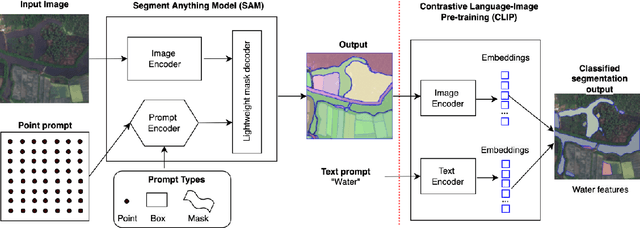

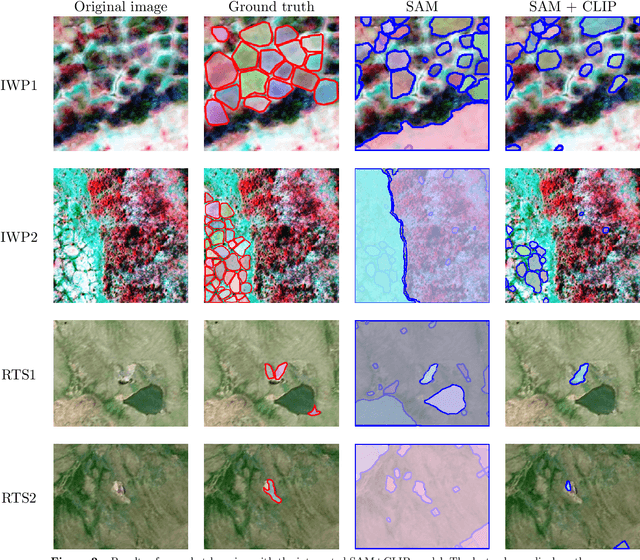
Abstract:This paper assesses trending AI foundation models, especially emerging computer vision foundation models and their performance in natural landscape feature segmentation. While the term foundation model has quickly garnered interest from the geospatial domain, its definition remains vague. Hence, this paper will first introduce AI foundation models and their defining characteristics. Built upon the tremendous success achieved by Large Language Models (LLMs) as the foundation models for language tasks, this paper discusses the challenges of building foundation models for geospatial artificial intelligence (GeoAI) vision tasks. To evaluate the performance of large AI vision models, especially Meta's Segment Anything Model (SAM), we implemented different instance segmentation pipelines that minimize the changes to SAM to leverage its power as a foundation model. A series of prompt strategies was developed to test SAM's performance regarding its theoretical upper bound of predictive accuracy, zero-shot performance, and domain adaptability through fine-tuning. The analysis used two permafrost feature datasets, ice-wedge polygons and retrogressive thaw slumps because (1) these landform features are more challenging to segment than manmade features due to their complicated formation mechanisms, diverse forms, and vague boundaries; (2) their presence and changes are important indicators for Arctic warming and climate change. The results show that although promising, SAM still has room for improvement to support AI-augmented terrain mapping. The spatial and domain generalizability of this finding is further validated using a more general dataset EuroCrop for agricultural field mapping. Finally, we discuss future research directions that strengthen SAM's applicability in challenging geospatial domains.
Any-Way Meta Learning
Jan 10, 2024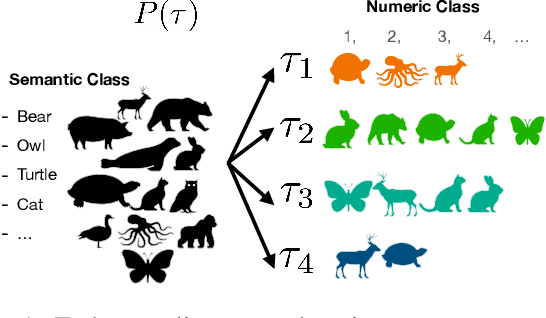

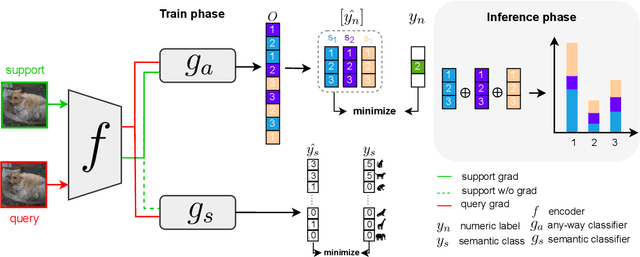

Abstract:Although meta-learning seems promising performance in the realm of rapid adaptability, it is constrained by fixed cardinality. When faced with tasks of varying cardinalities that were unseen during training, the model lacks its ability. In this paper, we address and resolve this challenge by harnessing `label equivalence' emerged from stochastic numeric label assignments during episodic task sampling. Questioning what defines ``true" meta-learning, we introduce the ``any-way" learning paradigm, an innovative model training approach that liberates model from fixed cardinality constraints. Surprisingly, this model not only matches but often outperforms traditional fixed-way models in terms of performance, convergence speed, and stability. This disrupts established notions about domain generalization. Furthermore, we argue that the inherent label equivalence naturally lacks semantic information. To bridge this semantic information gap arising from label equivalence, we further propose a mechanism for infusing semantic class information into the model. This would enhance the model's comprehension and functionality. Experiments conducted on renowned architectures like MAML and ProtoNet affirm the effectiveness of our method.
Assessment of IBM and NASA's geospatial foundation model in flood inundation mapping
Sep 25, 2023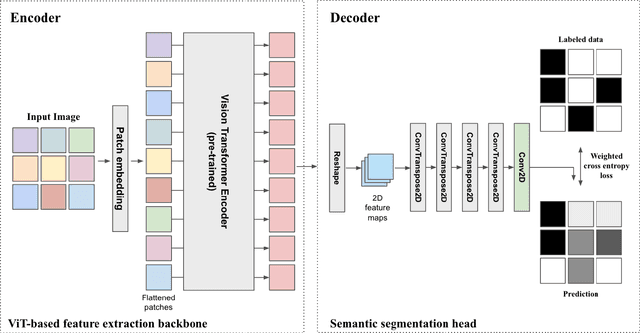
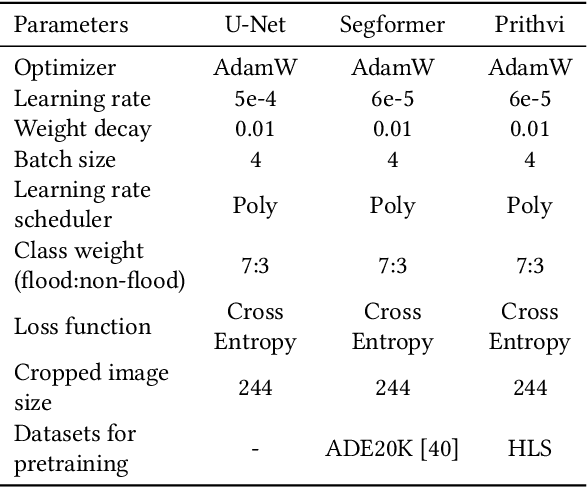
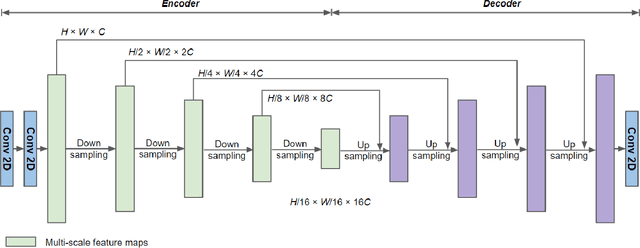

Abstract:Vision foundation models are a new frontier in GeoAI research because of their potential to enable powerful image analysis by learning and extracting important image features from vast amounts of geospatial data. This paper evaluates the performance of the first-of-its-kind geospatial foundation model, IBM-NASA's Prithvi, to support a crucial geospatial analysis task: flood inundation mapping. This model is compared with popular convolutional neural network and vision transformer-based architectures in terms of mapping accuracy for flooded areas. A benchmark dataset, Sen1Floods11, is used in the experiments, and the models' predictability, generalizability, and transferability are evaluated based on both a test dataset and a dataset that is completely unseen by the model. Results show the impressive transferability of the Prithvi model, highlighting its performance advantages in segmenting flooded areas in previously unseen regions. The findings also suggest areas for improvement for the Prithvi model in terms of adopting multi-scale representation learning, developing more end-to-end pipelines for high-level image analysis tasks, and offering more flexibility in terms of input data bands.
 Add to Chrome
Add to Chrome Add to Firefox
Add to Firefox Add to Edge
Add to Edge